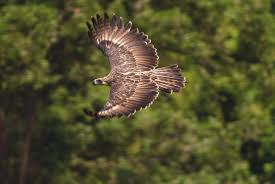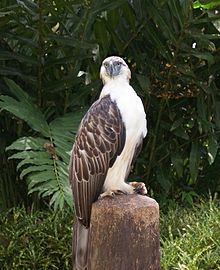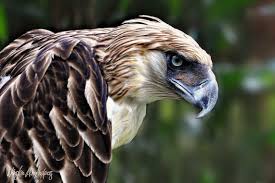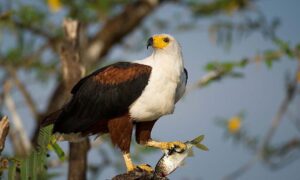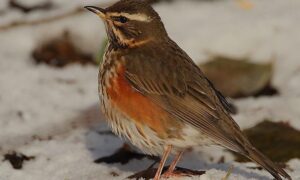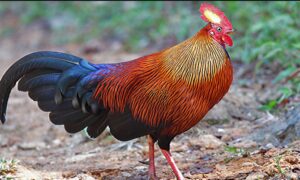The national bird of Philippine is Philippine eagle (Pithecophaga jefferyi) has not managed to rid itself of the threats that have brought it to the verge of extinction, and is in critical danger of extinction.For its few specimens and the alarming speed of disappearance, it is considered one of the rarest birds in the world and is in serious danger of extinction.
Philippines national bird
The national bird of Philippine is raptor critically endangered according to IUCN criteria because they have an extremely small population as a result of the extremely rapid decline that has occurred in the last three generations, ie in the last 48 years. This has been due mainly to the excessive deforestation that has destroyed its natural environment in many areas of its distribution.
It also appears that the situation does not improve, since adult recruitment is very low, indicating that the decline will continue in the future. (This means that very few specimens reach adulthood, and therefore the population that can be raised is not recovered).
Interesting Facts About Philippine Eagle
Here we write briefly interesting facts about the national bird of Philippine is Philippine eagle. To data from 1992, there were less than 226 adults, and in total there was an estimated population, including immature, of between 350 and 670 specimens. These data were calculated assuming that there is a couple for every 25 to 50 km2, that 40% of their area is available, and that they only have one rearing per couple.
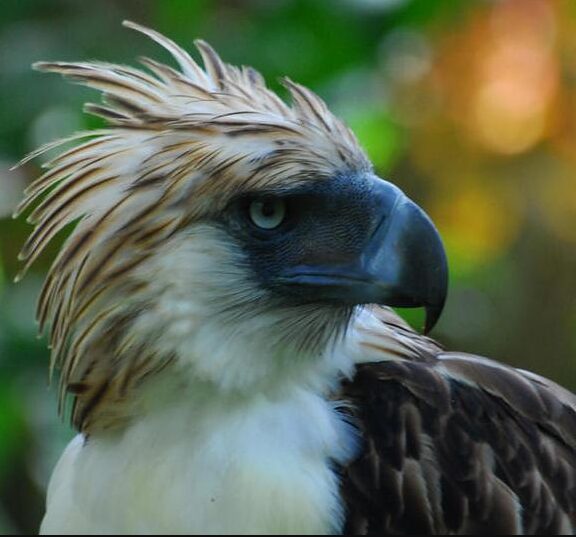
Bueser ET. Al (2003) estimated a population in Mindanao between 82 and 233 couples, thus having the best population of all. Estimates on other islands indicate only 6 pairs in Samar and possibly 2 in Leyte; In Luzon there are probably very few. In total, according to this author, there are between 90 and 250 couples, or a total of between 180 and 500 adults, according to data from 2003. These data, however, should be treated with caution, and the estimates should be improved.
FROM AGUILA COME-MONOS TO
PHILIPPINE EAGLE The existence of these eagles was not known, at least officially, until 1896, since they do not usually leave the forested areas. The species was discovered by English explorer and naturalist John Whitehead, who collected the first specimen two weeks later.
At that time they were given the name ” eagle”, as the natives of the place claimed that they only fed on monkeys. Its scientific name also came out of this erroneous idea, since phitecus means’onoono ‘in Greek, and phagus means’ comer’. Years later, through studies it was verified that they also ate other animals like the Philippine flying lemur ( Cynocephalus Volans ) , some snakes, rats, lemurs, varans, big birds like calaos , and even some domestic pig.
Thus from 1978 the name was changed to Philippine eagle , although it is still called eagle eat-monkeys, and even Mona eagle
Locally it is known as ‘Haribon’ or’Haring Ibon’, which means’y of the Birds’. It is also known as the’banog
CHARACTERISTICS
It is the largest raptor in the world, along with others such as the giant tortoise or Steller’s puja ( Haliaeetus pelagicus )
Females are between 10-20% larger than males, and measure up to one meter. They weigh about 6 to 7 kilos and have a wingspan of more than two meters, which makes them the largest raptors in the world . The males, however, weigh an average of 4.5 kg.
Their longevity is from 30 to 60 years in freedom, surpassing this age in captivity.
Her belly is creamy white, while your back is brown. With slightly darker wings and cream-colored feathers interspersed. The long feathers of the head and nape that give it a curious appearance when kept unfolded, are cream colored with a full length strip of brown color. In the unfolding of these feathers they give him an aspect of animal more robust and great in general; instead, when he has his feathers folded, his large black beak stands out just like the rest of his face.
The chicks are whiter, and the juveniles resemble the adults, although with white margins on the feathers of the back and the wings.
One characteristic that can be appreciated of this bird as soon as it is seen is that it is a raptor perfectly prepared to kill relatively large prey. Its peak, although narrow, is very large and strong, with the characteristic eagle shape that allows it to catch the prey with its hook shape. Their paws are also large and strong, yellow, with large and powerful black claws of which undoubtedly, a prey has it very difficult to escape.
Its flight is fast and agile, resembling more of the small hawks than of the great birds of prey.
Do you know bird of paradise raggiana is the national bird of Papus New Guinea.
HUNTING: They usually hunt alone, although pairs have been observed hunting together. In this case one of the two acts as a decoy, catching the attention of the group of monkeys in this case, while the other executes a surprise attack by the back of the group.
Each couple needs an area between 65 and 130 km2.
Among other things, this species is important because it can act as an indicator of the health of the forest ecosystems of the Philippines and because it has cultural importance for indigenous peoples within their range.
[table caption=”Philippine Eagle Features” width=”500″]
No.,Features,Measures,
1,National Bird,Philippine\
2,Family,Accipitridae
3,Wingspan,184 to 220 cm (6 ft 0 in to 7 ft 3 in)
4,Phylum,Chordate
5,Mass Male,4.7 to 8.0 kilograms (10.4 to 17.6 lb)
6,Mass Female,4.7 to 8.0 kilograms (10.4 to 17.6 lb)
7,Body Length,86 to 102 cm (2.82 to 3.35 ft)
[/table]
(Only to see that it is the national bird of the Philippines) REPRODUCTION: Their nests are enormous structures that build in the branches of the trees. These are built by couples who will be together for life, as they are monogamous. However, if a bird of one pair dies, the other will seek a new pair to replace the loss.
They reproduce between September and February depending on the rains, the availability of prey and the island in which they live. They lay a single egg incubating for 58 to 68 days.
When a chick is born, the following year does not raise, since in the next 20 months the parents care for the offspring; however, if the baby is not born or dies early, the next year they will try to breed again.
Both parents participate in the incubation, although the female incubates most of the day and all night. It is also both parents who help feed the offspring. In addition, until the baby is about 7 weeks old, they take turns protecting it from the sun and rain.
The young hawk will fly for the first time at 4 or 5 months
The female sexually mature at five years of age and the male at seven.
This eagle was named a national bird of the Philippines in 1995 by President Fidel V. Ramos
EVOLUTIVE HISTORY: A study of its DNA in 2007 indicates that the bird has a unique evolutionary history, that is, its genetic sequence differs from those of other great eagles. Researchers at the University of Michigan analyzed DNA isolated from blood samples from the Philippine eagle and from others such as the harpy eagle ( Harpia harpyja ) or the crested eagle or moth eagle ( Morphnus guianensis ) , and found that they are not closely related as Was previously thought. It is now known that their similarities in size, habitat and habits are rather the result of convergent evolution. At present, it is believed that his closest relatives are short-tailed eagles.
HABITAT AND DISTRIBUTION AREA
They are endemic to the Philippines , To Southeast Asia.
Here, up to 1940, some 6,000 specimens were estimated in jungle areas of Luzon, Samar, Leyte and Mindanao.
In just 70 years, the number has risen to around 180 to 500 copies distributed only by the islands of Mindanao Samar and Luzon, where they are almost extinct.
It inhabits primary dipterocarp forests, especially on steep terrain. Sometimes it also frequents secondary vegetation and gallery forests, although never open areas. It is found from lowlands to 1800 meters high.
The dipterocarp ponds refer to those that have plants of this family,
Mainly tropical lowland trees in the rainforest The gallery forest refers to the vegetation that survives mainly due to the humidity of the soil, and which grows, usually frondily, on the banks of a river.
THREATS
Since the 1960s, harsh predictions of the imminent extinction of the Philippine eagle have been insistently repeated because of its small population, which is rapidly declining. And it faces many threats, such as the loss of mature forest habitat.
DESTRUCTION OF YOUR HABITAT
The destruction of forests and fragmentation for the extraction of commercial timber and for crop rotation is the main threat. And is that with these practices the old forests are being lost quickly, So that only 9220 km2 are available in conditions for these eagles.
HUMAN USE OF THE MIDDLE
In addition, most of the remaining lowland forests are subject to forest concessions, so that they cannot be properly protected.
MINING AND HUNTING
Mining and uncontrolled hunting, whether for food or for sale to zoos or to trade with them in other markets, pose new threats.
PESTICIDES
There is also evidence that pesticides through the food chain accumulate in their body, further reducing their slow reproductive rhythm.
CONSERVATION MEASURES
It is included in Appendix I and II of CITES.
In addition, this majestic raptor is protected by law in the Philippines.
Several conservation initiatives are currently underway.
A number of initiatives
have been put in place since 1970, including the adoption of legislation prohibiting persecution, nest protection, studies, awareness-raising campaigns, captive breeding, and a project Partner? Economic to relieve pressure on the territory of the eagle while increasing local economic prosperity.
It can also be found in some protected areas such as the Sierra Madre Natural Park in the north in Luzon, And in the Parks of Mount Kitanglad and Mount Apo in Mindanao both.
PROPOSED CONSERVATION MEASURES
Some of the proposed measures are to conduct further research on their distribution, quantity, biological needs and threats.
In addition, protected areas should be expanded to include more eagles’ nests and their hunting habitat.
Habitat management plans should be implemented for the benefit of wildlife and local people.
In addition, eagle friendly practices among foresters should be integrated, as well as a campaign to promote pride in their national emblem and respect for these beautiful raptors, which can only be enjoyed in the Philippines.
CAPACITY BUILDING
In an attempt to recover these beautiful eagles, a rehabilitation center for Philippine eagles confiscated in Mount Apo National Park (Mindanao) was inaugurated in 1976 under the auspices of the Forest Development Office. This center is part of the Philippine Eagle Conservation (PECP) program. This program also works on education campaigns, protection and monitoring of nests and the conservation of the young
. However, in 14 years the efforts to raise them in captivity were unsuccessful because they did not have the right equipment or knowledge. If we add to this that they are little social birds, failure is evident. To give us an idea, On two occasions the females killed the males, and when they got them to mate, the eggs were not fertile.
However, although it was expected, on January 15, 1992, the world’s first captive chick was born and named Pag-Asa. Since then more specimens have been born, and the breeding season of 2000/01 can be considered one of the best seasons, although only two specimens were born. In all, 9 of the 23 eagles of the center were born in the same.
With respect to the first release of a bird bred in captivity, was made in 2004, when a male was released in the forest of Mount Apo, Mindanao. Sadly, this bird died electrocuted nine months after its release. Even so,
New experimental releases are planned . However, in spite of all these efforts, if the loss of habitat continues at the current rate, the future of this raptor is very uncertain.
Philippine Eagle Picture
